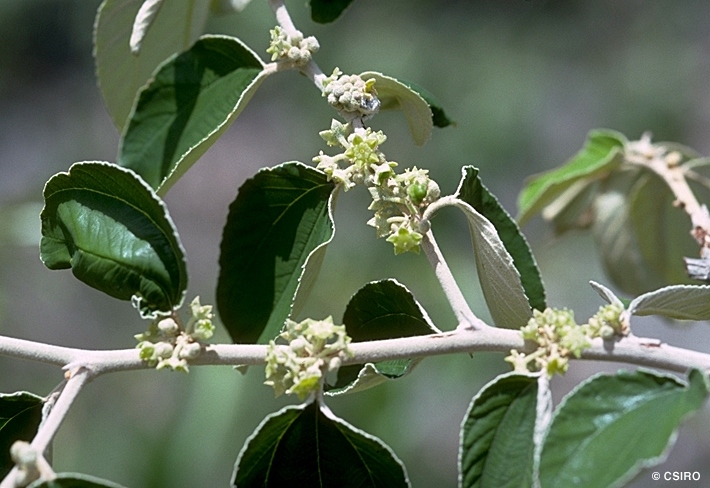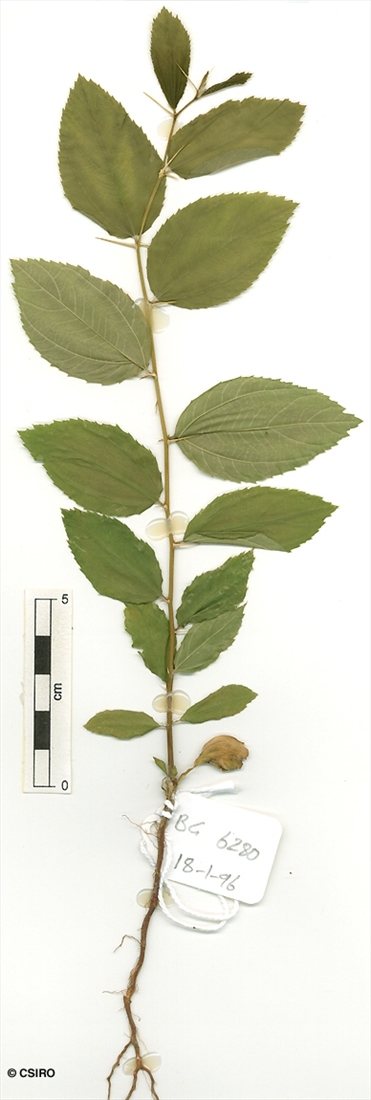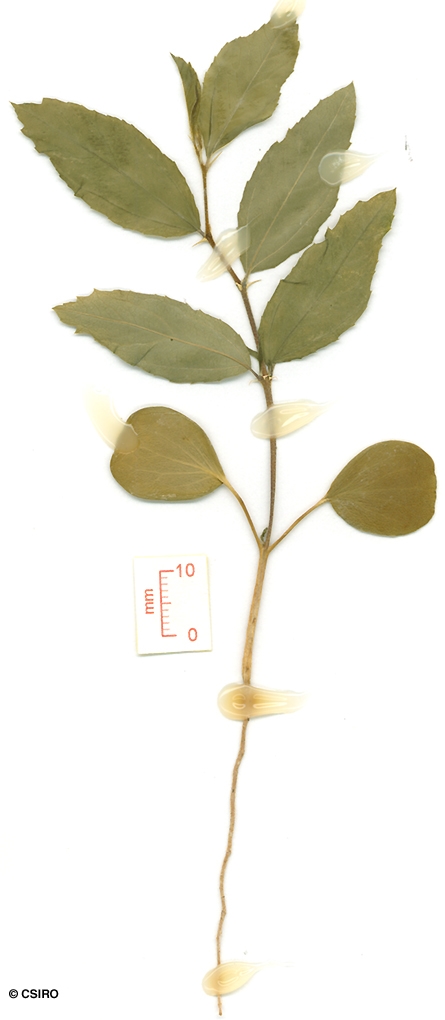Australian Tropical Rainforest Plants - Online edition
Ziziphus mauritiana Lam.




Lamarck, J.B.A.P.Monnet de (1797) Encyclopedique Methodique, Botanique 3: 319. Type: .. lIsle de France ..
Common Jujube; Apple, Chinee; Indian Jujube; Chinee Apple; Jujube, Common; Jujube, Indian
Occasionally grows into a small tree but usually flowers and fruits as a shrub.
Cotyledons +/- orbicular or obcordate, about 15-16 mm diam., petioles about 8-15 mm long. First pair of leaves lanceolate, +/- three-veined, margins toothed. At the tenth leaf stage: leaf blade margins toothed with about 25 teeth on each side, 3-veined, underside clothed in fine, short, scattered hairs. Stipules spiny, about 3-10 mm long, one stipule of each pair usually longer than the other. Seed germination time 32 to 103 days.
An introduced species originally from tropical Asia now naturalised in WA, NT, CYP, NEQ, CEQ and southwards as far as south-eastern Queensland. Altitudinal range in northern Australia from near sea level to 400 m. Often grows in open forest particularly in disturbed areas around old settlements but also found in monsoon forest and vine thickets.
This species may have medicinal properties.
Although primarily a food plant this species has been used extensively also in medicine. Fruits are regarded as tonic, and are an ingredient of a medicine used in chest complaints. Cribb (1981).





